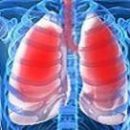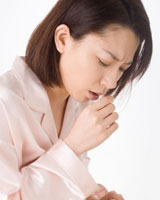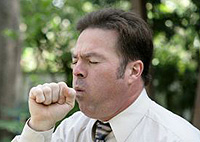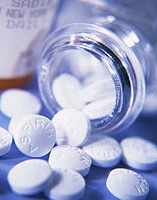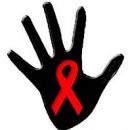What are the symptoms of the lung gangrene? How is the treatment of lung gangrenes? How to care for patients with gangrea lung? Answers to these questions you will find in the article.
Content
What are the symptoms of the lung gangrene
Abscess and gangrene lung have a number of common features at their start: heavy condition, high body temperature, pouring sweat and t. D. However, in the gangrene of a lung disease soon acquires specific features. First of all, the state of the patient is progressively deteriorating, it highlights a mild mokRota (sharp disgusting smell of rotten tooth). The sputum assembled in a glass vessel, it is clearly divided into 3 layers: the top is frothy, medium-brown with an admixture of pus and blood, the lower - the riveted mass (particles of the destroyed pulmonary fabric).
With auscultation, many wet wheezing are determined at a significant mass of pulmonary fields. Radiologically detected common homogeneous infiltration, since the gangrene can capture a whole share and even a whole lung.
Lico and sputum microscopy detects leoQuits, red blood cells, diatrich tubes, characteristic of lung gangrenes; no elastic fibers, they are maliciousride enzymes of microorganisms causing gangRenu (in contrast to sputum with light abscess, when elastic fibers are detected during microscopy).
Changes in blood speak of a pronounced pathology characteristic of the inflammatory process.
How is the treatment of lung gangrenes
Treatment of lung gangrene. The more successful than before it started. The mode and nutrition of the patient correspond to those in the lung abscess. It is advisable to some liquid limit (up to 1 l per day), which helps to reduce the amount of sputum. Specific drugs are antibiotics and sulfonamide drugs (in the same doses as in abscess), as well as novarsenol (0.15-0.3 g after 3-5 days; for no more than 3 g). To reduce cough prescribeRadi Codeina, as well as the thermal hydrate (to reduce the unpleasant smell of sputum). Good effect gives re-transfusion.
Care for patients with gangrea lung
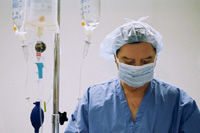
Permanent Heavy Smell Wet Care Macg Tricks. It's all the surrounding patients. If possible, it is necessary to place patients with a gangrene lung in a separate ward, use deodorizing (reduced unpleasant odors) means, for example, creosote. The patient's bed should always stand the Wattleship, preferably with DeodoriSolution and hermetic lid. In connection with increased sweating, such patients need a frequent change of native and bed linen. Sometimes the patient is experiencing severe weakness, it has to feed it from a spoon. The patient with a gangrene lung is an extremely difficult patient, he especially needs a warm attitude of the duty personnel, gentle words of copperQing sister.
Hazardous complication with lung gangrene (as in abscess, bronchiectatic disease) isJumping. With the hemloofs of the sputum painted scarlet blood, sometimes spinning blood clots. Sometimes the patient highlights a significant amount of blood (ligableeding), which can lead to death from blood loss, if the help was not given on time. Lonantic bleeding and hemoptysome arise due todamage to blood vessels in bronchops and lungs (purulent vessel wall melting). This happens with the diseases described above, as well as with lung cancer and injury.
Help with hemoptia is to provide a patient with full physical and mental peace; The patient must be seeded in bed. He can not beCooking, taking hot food and drink (a little cold drink is allowed). In order of first aid, a 10% calcium chloride solution (1-2 tablespoons) is given or administered intravenously 10 ml of 10% calcium chloride solution, sodium chloride solution 0/2 tablespoons per 100 ml of water). If heroching continuesSia and accompanied by a cough, it is advisable to give a patient codeine and pour blood (100 ml) or blood-rebuilding fluid. Typically mentioned therapeuticThe events in the near future cease heavingKanye.
With abundant pulmonary bleeding, therapeutic tactics are produced jointly with the therapist and surgeon.

